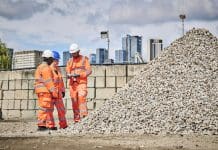Optimising building performance is the most urgently needed response to the energy crisis. Hariharan Natarajan, architect and energy engineer at SketchUp, explores how the industry can go about it
To set the scene, operational energy use by buildings accounts for about 30% of global energy consumption, and building them accounts for another 4%.
Electricity use in buildings is increasing, and space cooling is the fastest-growing end-use of electricity among all use cases.
Climate predictions show no end to these trends in the foreseeable future.
What is the best way forward for designers of new buildings?
- Design to reduce overall loads – design using passive strategies, at the very least. In other words, design buildings that require the least cooling and heating.
- Choose efficient systems that meet buildings’ very reduced heating and cooling needs, using minimal energy.
- Design for optimised operation, allowing for flexibility in a building’s operation to adapt to changing conditions. Pre-cooling a building during a hot day is an example of this.
- Prioritise electricity over other fuel sources – use renewable and emission-free power sources. Bonus points if the building generates electricity to feed back into the grid. In buildings prioritising electricity over other energy sources, such as gas and oil, removing the latter and using electricity exclusively can eventually help reach net-zero emissions.
- Use building design to incentivise other upcoming technologies. For instance, provide car charging stations to encourage people to drive electric cars.
- Optimise design to take advantage of mass public services, like transportation. This can be achieved by leaning on governments to improve things such as transport infrastructure – and designing to prioritise them.
How can architects prioritise creating genuinely sustainable buildings over lowering costs?
Architects should be designing sustainable buildings, regardless of global or market conditions. Designing only sustainable buildings as a matter of culture removes all questions about profitability.
Architects also need to make the case to owners that sustainable, energy-efficient buildings cost pretty much the same to build as regular buildings, and they save operators in energy costs, over the lifetime of the building.
Early design decisions have the most significant impact at the lowest cost, an idea that Patrick MacLeamy captured in his famous MacLeamy Curve.
Conceptual optimisations have a significant impact later in the project. Reducing cooling loads through passive design measures, for example, reduces the size of the cooling systems the building needs and costs less to run over the lifetime of the building, all the while keeping emissions lower than what they could have been.
How can sustainable initiatives be measured to improve energy consumption effectively?
Architects should use building energy simulation software during their design process, in order to understand the implications of their design choices on the energy consumption of the building.
From this, they can intentionally design energy-efficient buildings using energy simulation software.
If you’re able to do climate analyses for sites before you start designing, you can evaluate conditions like the weather, the daylight, and what will work best for that plot of land. This way, before you start designing, you will better understand what will work and what won’t.
In addition to using energy simulation software, designers and owners must prioritise continuous post-occupancy measurement and verification of energy use in the building in order to ensure that the energy consumption patterns are as intended. This enables you to be able to make any interventions necessary when needed.
What are your favourite examples of how smart design decisions can positively impact a project’s cost and energy output?
Apart from being a joy to live and work in, high-performance buildings have a host of cascading benefits to their neighbourhood, environment and occupants.
From reducing local crime rates, creating jobs, creating a sense of local pride, and improving education – the benefits of smart design in the community can be endless.
A great example is a Net Zero Energy School in Washington DC. That school had many positive outcomes for its students, immediate and wider environments. Initially, two schools were developed in the location originally designed in the 60s.
They could’ve been described as ‘student fortresses’ where nobody gets in and out. Aesthetically, they had small windows and thick walls, meaning they weren’t pleasant to be in, and weren’t energy efficient. The designers eventually looked at the climate, considering all factors, and redesigned the schools.
They created a wonderful cultural space, resulting in drastic design changes. When going through the design process, if they decided they wanted more daylight in the school for the kids, they would hold a design intervention to see how much daylight they were getting, exploring ways they could foster community through open and two interlinked spaces.
The final impressive design was achieved by trying a new tactic each time. They would test that tactic through daylight modelling software to see how well it worked. Finally, they would assess if it was worth incorporating the final outcome or deciding whether it needed to be changed again.
It’s with this kind of iterated cycle, where designers take a trial-and-error approach through over 600 models, incorporating small changes to get the ideal outcome – that is truly the best way to design a sustainable building.
How can architects prioritise energy performance as a hallmark of design excellence?
The key to doing this is for architects to measure and record the projected energy performance of all their buildings during the design phase using building energy simulation tools. Over time, this will allow them to compare their current projects to their past ones and see if they are improving at designing energy-efficient buildings.
This doesn’t have to be too complicated. Even tracking a widely understood and accepted metric like the EUI should suffice. They should also widely and proudly share these metrics as the fourth criteria of design so that the criteria incorporate form, function, aesthetics and performance.
We still have a long way to go in the AEC industry, but designers, architects and planners should feel empowered by the choices they can make to impact our environment positively. Moreover, they must prioritise sustainable design in response to the climate crisis. It’s 2023 – sustainable buildings are no longer a ‘nice to have’ but a ‘must have’.














